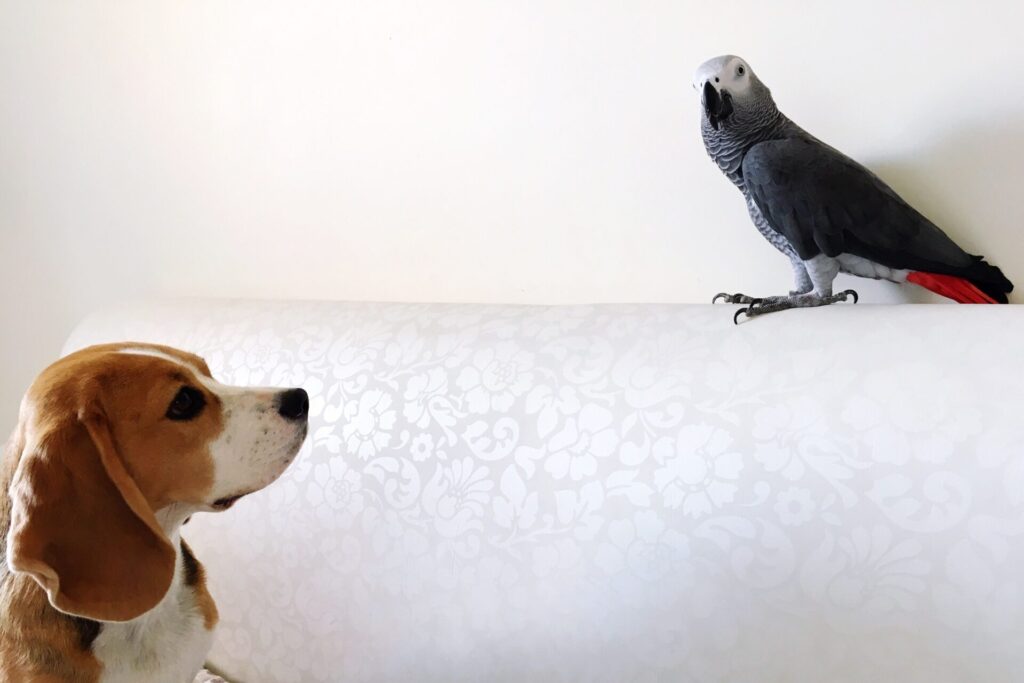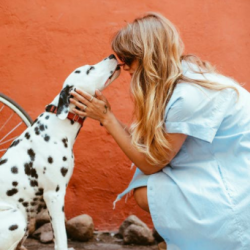
For many pet owners, the joys of sharing their lives with both dogs and birds are immeasurable. Dogs provide companionship, protection, and unconditional love, while pet birds bring charm and melodies into our homes. However, ensuring the peaceful coexistence of these two very different pets can be a challenge. Dogs, with their natural instincts, may view pet birds as prey, and the consequences of an encounter can be tragic. In this comprehensive guide, we will explore effective ways to keep your pet dogs away from your beloved pet birds, allowing all your feathered and furry friends to thrive together harmoniously.
Understanding the Nature of Dogs and Birds
Before diving into strategies for keeping your dogs away from your pet birds, it’s essential to understand the instincts and behaviors of both species.
Dogs
Dogs, being descendants of wolves, have an innate prey drive. This drive can be triggered by small, fast-moving objects, like birds. Understanding this instinct is crucial to managing their interactions with pet birds.
Birds
Pet birds, whether parrots, parrotlets, canaries, or finches, are naturally prey animals in the wild. This means they are sensitive to sudden movements, loud noises, and perceived threats. Their survival instincts are finely tuned.
Creating Separate Living Spaces
One of the most effective ways to keep your pet dogs away from your pet birds is to establish distinct living spaces for each.
Bird Cages
Ensure that your pet birds have a secure and well-ventilated cage. Place it in an area where dogs can’t access it easily, like a room with a closed door or a high shelf. Make sure the cage is sturdy enough to withstand any attempts by curious dogs to knock it over.
Dog-Free Zones
Designate certain areas of your home as “dog-free zones.” These spaces should be inaccessible to your dogs, where your pet birds can enjoy some peaceful time outside their cages. Use baby gates or other barriers to enforce these boundaries.
Supervised Interaction
While keeping dogs and birds physically separated is essential, supervised interaction can help foster positive relationships between them.
Leash Training
Train your dogs to stay on a leash when they are around your pet birds. This provides you with better control over their movements and actions. Gradually introduce them to the birds while leashed, rewarding calm behavior with treats and praise.
Calm and Controlled Introductions
Gradual introductions are key to successful cohabitation. Allow your dogs to observe your pet birds from a distance at first. Over time, decrease the distance while ensuring your dogs remain calm and under control. Always watch for signs of stress in your birds and dogs and intervene if necessary.
Obedience Training for Dogs
Proper obedience training is vital for your dogs’ ability to coexist peacefully with your pet birds.
Basic Commands
Teach your dogs basic commands such as “sit,” “stay,” “leave it,” and “come.” These commands are essential for controlling their behavior around your pet birds.
Counter-Conditioning
Use positive reinforcement techniques to teach your dogs that being calm around the birds leads to rewards. This helps to redirect their prey drive and establish a positive association.
Providing Mental and Physical Stimulation
A well-exercised and mentally stimulated dog is less likely to focus on your pet birds as potential prey.
Daily Exercise
Ensure your dogs get plenty of physical exercise through daily walks, playtime, and other activities. A tired dog is less likely to chase or bother your pet birds.
Puzzle Toys and Enrichment
Engage your dogs with puzzle toys and mental enrichment activities. This not only keeps them occupied but also sharpens their minds, reducing the urge to chase or pester your pet birds.
Using Deterrents
There are various deterrents that can help discourage your dogs from approaching your pet birds’ living areas.
Scent Deterrents
Certain scents, such as citrus or bitter apple, are unpleasant to dogs. Spraying these scents around the bird cages or designated bird areas can deter dogs from approaching.
Motion-Activated Devices
Motion-activated devices, like ultrasonic alarms or sprinkler systems, can startle dogs when they get too close to your pet birds’ space. This can teach them to associate discomfort with those areas.
Seek Professional Help
If you’re struggling to manage your dogs’ behavior around your pet birds despite your best efforts, consider seeking professional help.
Dog Trainer or Behaviorist
Consult a professional dog trainer or behaviorist experienced in working with dogs and small pets. They can assess your specific situation and provide customized guidance.
Conclusion
Sharing your home with both dogs and pet birds is a rewarding experience, but it requires careful planning and management to ensure their safety and well-being. By understanding the nature of dogs and birds, creating separate living spaces, supervising interactions, providing obedience training and mental stimulation, using deterrents, and seeking professional help when needed, you can create a harmonious environment where your feathered and furry friends can thrive together. Remember that patience, consistency, and a deep commitment to their welfare are the keys to success in this endeavor. With the right approach, your dogs and pet birds can coexist peacefully, bringing joy and happiness to your home for years to come.

